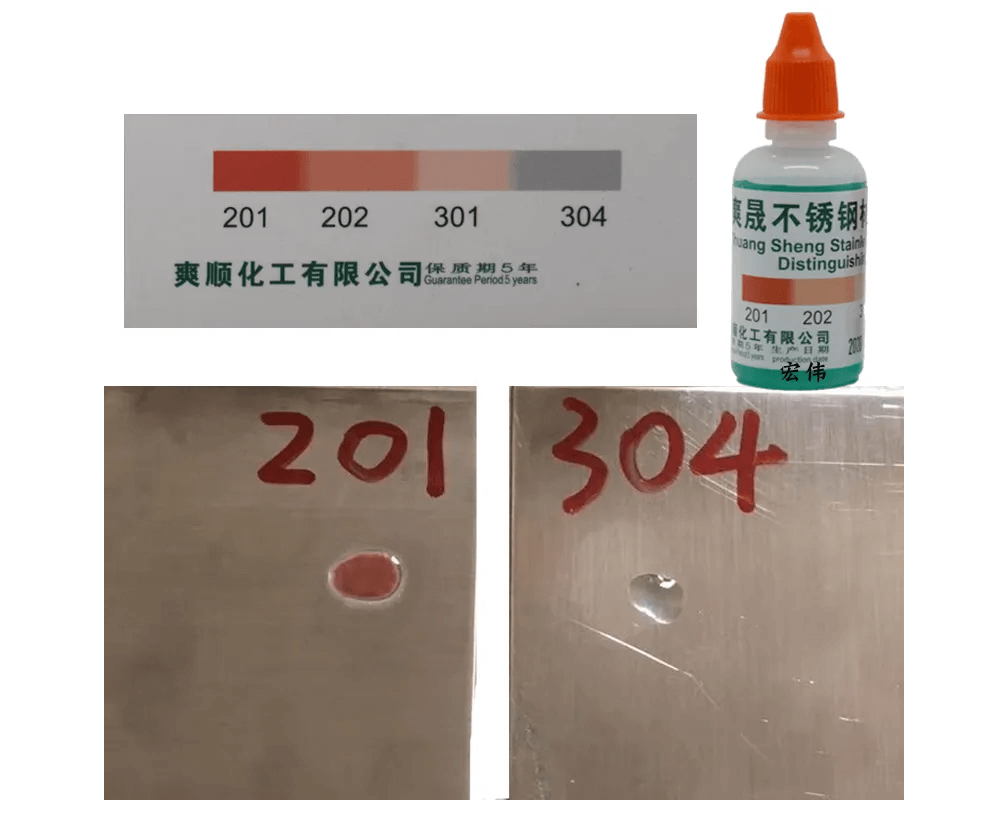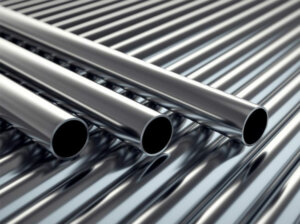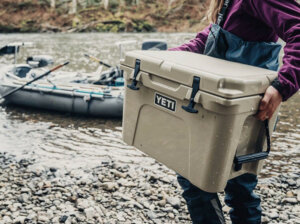Stainless steel bottles play a crucial role in modern life and are favored for their excellent performance and durability. Among them, grade 304 stainless steel has gained much attention due to its outstanding corrosion resistance and low magnetic properties. However, the market also contains products of varying quality. Below, Everich will introduce several simple and effective methods to identify grade 304 stainless steel, and we can also discover some clues through daily observations.
How To Test Stainless Steel Grade 304?
1. Stainless Steel Testing Liquid
Using a stainless steel testing liquid is a straightforward method. Simply drop the testing liquid on the stainless steel surface to be examined. In about 2-3 minutes, the color will change. Different colors correspond to different types of stainless steel. Genuine grade 304 stainless steel will exhibit no color change within 3 minutes, or the color may slightly deepen at the bottom. Usually, stainless steel testing liquids come with a comparison color chart, allowing you to determine the material based on the result.
1. Before the test, wipe off the dust, dirt, oil, and water on the surface of the material to be tested.
2. This product is slightly corrosive, rinse with water when it sticks to the skin.
3. The above test results are approximate values, and the phenomenon may be slightly different when the stainless steel material of the same grade changes due to changes in factors affecting antirust performance such as structure and surface state.
4. In addition, when the ambient temperature is high, the corrosion ability of the reagent will also be increased, and the reaction speed will be accelerated, resulting in slightly different phenomena.

2. Magnetic Identification
Grade 304 stainless steel is non-magnetic or exhibits weak magnetism. If the bottle shows strong magnetic properties, it is likely not genuine grade 304 stainless steel.
3. Copper Sulfate Test
Remove the oxide layer from the steel surface, add a drop of water, and wipe it with copper sulfate. If there is no color change, it is likely stainless steel. If it turns purple-red, it may be non-magnetic high manganese steel, and if it exhibits magnetic properties, it may be ordinary steel or low-alloy steel.
4. Spark Testing
Perform spark testing by grinding the stainless steel on a grinding wheel and observing the sparks. If the sparks appear as streamlines with many dense flower-like patterns, it may indicate higher manganese content, such as high manganese steel or manganese ammonia steel.
5. Chemical Qualitative Test
This is an identification method to identify whether nickel is contained in magnetic stainless steel. The method is to dissolve a small piece of stainless steel in aqua regia, dilute the acid solution with clean water, add ammonia water for neutralization, and then gently inject nickel reagent.
If there is a red fluffy substance floating on the liquid surface, it means that the stainless steel contains nickel; if there is no red fluffy substance, it proves that there is no nickel in the stainless steel. However, due to the low nickel content in stainless steel, generally only a few percent, the nickel content is not easy to reveal or determine how much it is, and it can only be mastered after many experiments with standard samples.
FAQs
Q1: Can Stainless Steel Be Magnetic?
Yes, stainless steel can be magnetic, but it depends on the specific grade. There are two primary categories of stainless steel based on their magnetic properties:
1. Austenitic stainless steel: The most common grades in this category are grade 304 and 316 stainless steel. These are non-magnetic or only slightly magnetic due to their high nickel and chromium content.
2. Ferritic and martensitic stainless steel: These grades contain higher levels of ferrite, which makes them magnetic. Examples include 410, 430, and 440 stainless steel.
Q2: How Can I Tell If My Stainless Steel Is 304 Or 316?
Differentiating between 304 and 316 stainless steel can be challenging visually, as they look very similar. However, there are some methods to help distinguish them:
1. Chemical composition: The primary difference between grade 304 and 316 stainless steel is their chemical composition. 316 stainless steel contains additional molybdenum, which provides enhanced corrosion resistance, especially in chloride environments. While chemical analysis is the most accurate method, it requires specialized equipment and is not feasible for regular consumers.
2. Markings or labels: Check for any markings, labels, or certifications on the item. Manufacturers often stamp or label the grade of stainless steel used in their products.
3. Magnet test: As mentioned earlier, 316 stainless steel is typically non-magnetic, while grade 304 can be slightly magnetic. If the stainless steel item is magnetic, it may indicate that it is grade 304 or a ferritic/martensitic grade, not 316.
4. Corrosion resistance: If you know the environment the stainless steel is exposed to and it performs exceptionally well in resisting corrosion, it could be an indicator of 316 stainless steel due to its superior corrosion resistance compared to 304.
Q3: How Can I Test The Corrosion Resistance Of Stainless Steel?
Testing the corrosion resistance of stainless steel requires specialized equipment and procedures typically conducted in laboratories. Some common methods include:
1. Salt spray test (ASTM B117): This test exposes the stainless steel sample to a salt spray or fog to simulate corrosive conditions. The sample’s performance is evaluated over a specified period, and the results help assess its corrosion resistance.
2. Potentiodynamic polarization test: This electrochemical method measures the corrosion behavior of stainless steel by analyzing its current-voltage response in specific corrosive solutions.
3. Immersion test: The stainless steel sample is immersed in a corrosive solution for an extended period, and its corrosion rate is monitored and measured.
4. Crevice corrosion test: This test evaluates the resistance of stainless steel in crevices or gaps, which are known to be susceptible to corrosion.
These tests are typically conducted by material testing laboratories and are not practical for everyday users.
Conclusion
304 stainless steel contains more than 18% chromium and more than 8% nickel, which are also two important elements that determine the value of 304 material. The metal has good toughness, plasticity, and corrosion resistance, and it is also widely used. However, the quality of stainless steel on the market is uneven, there are inferior products and counterfeit products, so many buyers do not know how to choose.
By using the above methods, we can accurately identify the material of stainless steel, ensuring that we purchase reliable grade 304 stainless steel bottles for our daily use, providing us with convenience and peace of mind.




